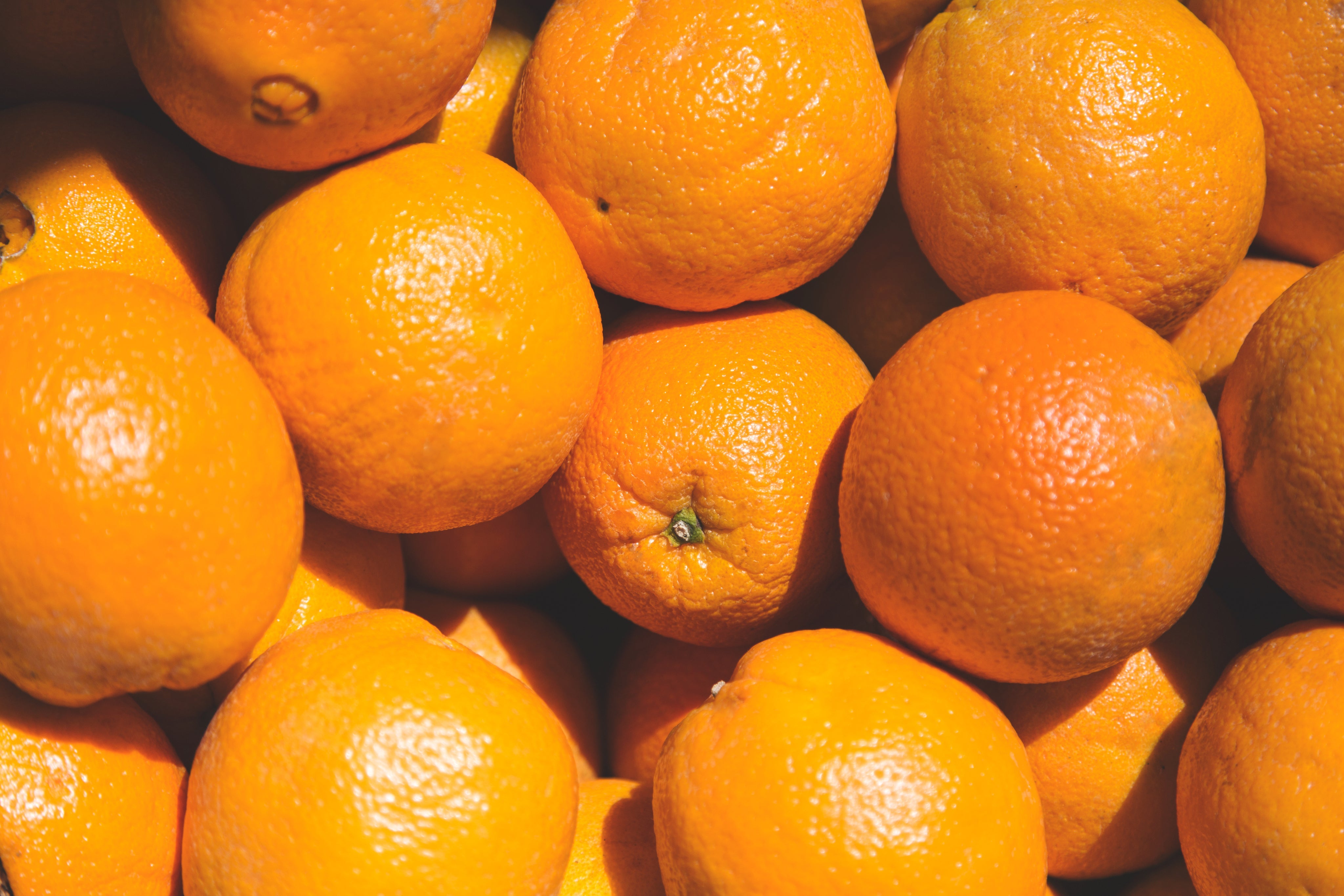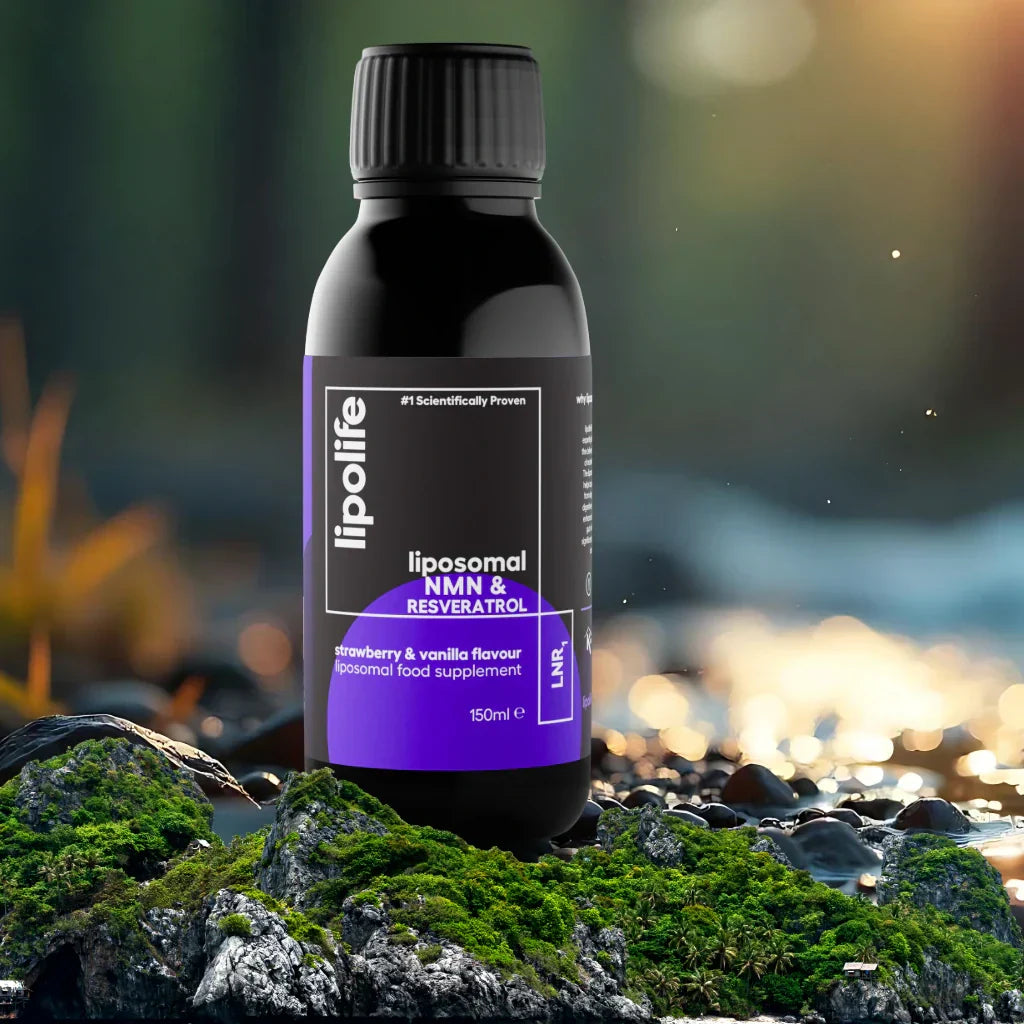Knowledge Hub
Vitamin D3
Vitamin D is a fat-soluble vitamin that is naturally present in a few foods, fortified in others and available as a food supplement. It is produced endogenously when ultraviolet (UV) rays from sunlight strike the skin and trigger vitamin D synthesis. When your skin gets enough direct UV light from sunshine it makes about 90% of the vitamin D it needs. DID YOU KNOW We get vitamin D3 from the sun. We need it to make calcium in the body, which helps strengthen your bones. Supports Bone Health Reduces Inflammation Strengthens Heart The recommended form of vitamin D is vitamin D3 or cholecalciferol. This is the natural, active form of vitamin D that your body makes from sunlight. Cholecalciferol is one of the five types vitamin D. Plants produce Vitamin D2 when they are exposed to UV light however, although you need both forms, Vitamin D3 is more important for your health and wellbeing. Our bodies absorb and use Vitamin D3 better and it is also more effective at treating diseases. Only after skin exposure to sufficient sunlight is it possible for your body to make vitamin D3 which can present a problem for those in the Northern Hemisphere and those with darker skin, where the sunlight is not as easily absorbed. Older adults are at increased risk of developing vitamin D insufficiency, partly because the skin’s ability to synthesise vitamin D declines with age but also because older adults are likely to spend more time indoors, reducing their exposure to sunlight. Vitamin D is fat soluble, its absorption depends on the gut’s ability to absorb dietary fat. Certain forms of liver disease, cystic fibrosis, celiac disease, Crohn’s disease and ulcerative colitis present fat malabsorption issues within the body which in turn affects levels of vitamin D. Your body requires vitamin D to absorb calcium; too little vitamin D in the body results in soft bones in children (rickets) and fragile, misshapen bones in adults (osteomalacia). Vitamin D promotes calcium absorption in the gut and maintains adequate serum calcium and phosphate concentrations to enable normal bone mineralisation. Your body does not make calcium, you have to consume it in your diet and that’s why vitamin D plays such a vital role in bone health. Your body also needs vitamin D for other important functions. Vitamin D roles in the body include reduction of inflammation as well as modulation of such processes as cell growth, neuromuscular and immune function and glucose metabolism. Muscle weakness may be another side effect of low vitamin D levels, especially in the elderly and a recent survey concluded that a vitamin D deficiency is also linked to heart disease. Perhaps somewhat surprisingly, not many foods are rich in vitamin D unless it has been “fortified” at the point of manufacture. Some super “D” foods are: Salmon (especially wild-caught) Mackerel (especially wild-caught) Mushrooms Vitamin D is the only vitamin supplement that the Department of Health recommends for the general population. The government estimates around 25% of teenagers and adults in the UK have low levels of vitamin D, which puts them at risk of deficiency and associated health issues. As there are so few food sources of vitamin D and sun exposure can be unreliable, food supplements are considered a safe way to prevent a deficiency.
Learn moreNucleotide
Nucleotides exist in all living organisms. In fact, every cell in your body contains them – over a billion per cell. Nucleotides are important for many biological functions, including their role as the building blocks of DNA and RNA. DID YOU KNOW Nucleotides are important for many biological functions, including their role as the building blocks of DNA and RNA. Cell regeneration Supports Immunity Muscle Function The body has an on-going demand for new cell production. Adults must create new cells at a rate at least sufficient to replace the cells that die. To do this the cell and its DNA divides to form two new cells. This cell proliferation is a lengthy and complicated process, dependant on energy and the supply of all five specific nucleotide building blocks to build the DNA and the RNA molecules in the new cells. The rate of proliferation of cells found in the intestinal lining, known as the epithelial cells, are higher here than elsewhere in the body. That means that cells are constantly being created to replace damaged or lost cells, every three to five days to be precise. This turnover of cells is so high, the body requires assistance via dietary intake as whilst the body can make nucleotides itself or salvage them from dying cells, certain types of cells require supplementary nucleotides provided in a person’s diet. During the last three months of pregnancy, antibodies are passed from the mother to the child so when born, they are protected with an inherited immunity which typically lasts up to six months depending on the health of the mother. Crucially, through breastmilk, babies take on board nucleotides which are vital to help normalise microflora and therefore help the immune system thrive beyond that which has been passed from the parent. Many infant formulas now contain nucleotides because studies have shown that babies fed nucleotide-supplemented infant formula experience better growth and development, maintain a healthier immune system and have increased levels of beneficial intestinal bacteria which reduce gastrointestinal distress. Beyond breast milk, nucleotides are typically found in foods which are far less common in the modern diet. Meals containing tripe, liver and kidneys provide high levels of nucleotides but typically, these are not foods which are consumed today and especially not for vegetarians and vegans. Unlike some vitamins and minerals, nucleotides are not yet considered essential nutrients for humans but poor diet, stress, chronic illness and the excessive use of antibiotics and alcohol all increase the body’s need for nucleotides in order to facilitate regular and effective cell proliferation. Their universal use and fundamental functionality and efficacy in every living organism make nucleotides a valuable management tool for many stress and health related conditions. For people with celiac disease supplementing with nucleotides could be highly beneficial to assist the small intestine repair from inflammation damage and promote villi growth. For endurance and performance athletes, nucleotides are essential for muscle function. Besides protein synthesis, they improve oxygen transport and reduce the effects of lesions in the intestinal tract and muscles, potentially decreasing recovery time and the impact of high intensity activity. Indeed, much potential exists for the use of nucleotides in a sports person’s supplement regime. By supporting a more rapid turnover of immune, digestive, muscle and blood cells, along with improving anabolic vs. catabolic drive, this “new” type of nutrient can be a real support to the training and recovery processes of a serious athlete. For those susceptible to the flu virus, if the nucleotide supply is insufficient, the viruses will proliferate unhindered, which may lead to more severe symptoms and prolonged illness. Conversely, with enough nucleotides the infection can be quickly counteracted during its initial stages. References Carver JD, Pimentel B, Cox WI, Barness LA. Dietary nucleotide effects upon immune function in infants. Pediatrics. 1991 Aug;88(2):359-63. PMID: 1861940. Mc Naughton L, Bentley DJ, Koeppel P. The effects of a nucleotide supplement on salivary IgA and cortisol after moderate endurance exercise. J Sports Med Phys Fitness. 2006 Mar;46(1):84-9. PMID: 16596104. Koeppel, P. Celiac Disease: Nutritional supplements for period following diagnosis. February 2013 Ostojic SM, Idrizovic K, Stojanovic MD. Sublingual nucleotides prolong run time to exhaustion in young physically active men. Nutrients. 2013 Nov 21;5(11):4776-85. doi: 10.3390/nu5114776. PMID: 24284618; PMCID: PMC3847760.
Learn moreCarnosine
Discovered in 1900, Carnosine is a small dipeptide molecule made up of the amino acids beta alanine and histidine. It has been heralded as the most exciting anti-ageing nutrient ever discovered. DID YOU KNOW Carnosine is found almost exclusively in meat. Anti-Ageing Brain Function Tissue Repair Carnosine is present throughout the body, wherever there are high energy demands such as in the brain, the heart and our muscles. Its function is to protect these vital areas from the metabolic demands of energy production and management. A typical red meat meal may provide 250 mg of carnosine but this is quickly degraded in the body by the carnosinase enzyme. What this means is that even if a person relied on red meat for their carnosine, it would not last long enough in the body to provide sustained protective effects. Supplementation with 1000 mg a day of carnosine overwhelms the carnosinase enzyme, thus enabling the body to maintain consistent blood levels of this critical nutrient. Carnosine is useful in the human body because of its capability of affecting so many different types of tissue. Growing scientific interest in longevity-boosting compounds has led to ground-breaking new research on Carnosine. Highly concentrated in the brain and muscle, Carnosine is a natural antioxidant and glycation-fighting nutrient whose levels in the body naturally decline with age. Carnosine was found to lower excessive immune responses in patients who have overactive immune systems. At the same time, Carnosine increased the immune response in those with under-active immune systems (like the elderly). This dual, regulatory ability of Carnosine makes it a vital tool for people with delicate immune systems, such as those with allergies and autoimmune conditions. Carnosine is produced by the brain and may be an important tool for limiting postoperative cognitive dysfunction. Taking common anaesthetics can often result in an increase in serotonin-derived melanoid (SDM); Carnosine protects against the neurotoxic effects of SDM. Further research has found that Carnosine prevents the swelling, cell death and free radical stress that occurs when the brain is starved of blood and treatment with Carnosine was shown to significantly improve neurological function after a stroke-like event. In addition to the neuroprotective qualities of Carnosine, one study found that after 3 months of Carnosine supplementation at 500mg/day, patients performed better on verbal episodic memory tests. Similarly, another study demonstrated improved verbal episodic memory in elderly people when they were given a combination of Anserine & Carnosine. A cell study found that Carnosine increased the ability of human skin and blood vessel cells to function optimally in the presence of high glucose. Therefore, Carnosine may be an important tool for encouraging wound healing in groups who typically have high blood sugars, particularly the elderly and diabetics. Carnosine’s multiple and interrelated mechanisms of action mean that it can provide benefits to cells and tissues throughout the body that would otherwise succumb to the pathologic effects of aging. References: Hipkiss AR, Cartwright SP, Bromley C, Gross SR, Bill RM. Carnosine: can understanding its actions on energy metabolism and protein homeostasis inform its therapeutic potential? Chem Cent J. 2013 Feb 25;7(1):38. doi: 10.1186/1752-153X-7-38. PMID: 23442334; PMCID: PMC3602167. Mahmood A, FitzGerald AJ, Marchbank T, Ntatsaki E, Murray D, Ghosh S, Playford RJ. Zinc carnosine, a health food supplement that stabilises small bowel integrity and stimulates gut repair processes. Gut. 2007 Feb;56(2):168-75. doi: 10.1136/gut.2006.099929. Epub 2006 Jun 15. PMID: 16777920; PMCID: PMC1856764. Brownrigg TD, Theisen CS, Fibuch EE, Seidler NW. Carnosine protects against the neurotoxic effects of a serotonin-derived melanoid. Neurochem Res. 2011 Mar;36(3):467-75. doi: 10.1007/s11064-010-0365-2. Epub 2010 Dec 14. PMID: 21153702. Min, J., Senut, M. C., Rajanikant, K., Greenberg, E., Bandagi, R., Zemke, D., Mousa, A., Kassab, M., Farooq, M. U., Gupta, R., & Majid, A. (2008). Differential neuroprotective effects of carnosine, anserine, and N-acetyl carnosine against permanent focal ischemia. Journal of neuroscience research, 86(13), 2984–2991. https://doi.org/10.1002/jnr.21744 Rokicki, J., Li, L., Imabayashi, E., Kaneko, J., Hisatsune, T., & Matsuda, H. (2015). Daily Carnosine and Anserine Supplementation Alters Verbal Episodic Memory and Resting State Network Connectivity in Healthy Elderly Adults. Frontiers in aging neuroscience, 7, 219. https://doi.org/10.3389/fnagi.2015.00219 Ansurudeen I, Sunkari VG, Grünler J, Peters V, Schmitt CP, Catrina SB, Brismar K, Forsberg EA. Carnosine enhances diabetic wound healing in the db/db mouse model of type 2 diabetes. Amino Acids. 2012 Jul;43(1):127-34. doi: 10.1007/s00726-012-1269-z. Epub 2012 Mar 24. PMID: 22451275.
Learn moreLevagen+
Exploring the Benefits of Levagen+ A Revolutionary Wellness Ingredient In the realm of health and wellness, constant innovation drives the development of new and effective supplements. One such groundbreaking ingredient making waves in the industry is Levagen+. This cutting-edge compound has gained attention for its potential to promote overall well-being and address various health concerns. Understanding Levagen+ Levagen+ is a patented form of palmitoylethanolamide (PEA), a fatty acid naturally produced in the body. PEA is renowned for its anti-inflammatory and analgesic properties, which contribute to its potential therapeutic effects. Levagen+ is a highly bioavailable and stable form of PEA, making it an attractive option for those seeking natural solutions to enhance their well-being. Anti-Inflammatory Properties One of the key features of Levagen+ is its anti-inflammatory properties. Inflammation is a natural response by the body to injury or infection, but chronic inflammation can lead to various health issues. Levagen+ has been studied for its ability to modulate the inflammatory response, potentially providing relief for conditions associated with inflammation. Pain Management Levagen+ has demonstrated promising results in the realm of pain management. Its analgesic effects make it a potential candidate for addressing chronic pain conditions. Studies have explored its use in conditions such as neuropathic pain and osteoarthritis, showing encouraging outcomes. Neuroprotective Effects Beyond its anti-inflammatory and analgesic properties, Levagen+ has also been investigated for its neuroprotective effects. Some studies suggest that it may have a role in supporting nerve health and protecting against neurodegenerative conditions. This opens up new possibilities for incorporating Levagen+ into formulations designed to support cognitive function. Immune System Support The immune system plays a crucial role in maintaining overall health. Levagen+ has been studied for its immunomodulatory effects, indicating its potential to support a balanced immune response. This could be particularly beneficial for individuals looking to enhance their immune system function. Applications and Future Research As research on this innovative compound continues, we can expect to see a growing body of evidence supporting its efficacy in different applications. Levagen+ represents a promising development in the world of health and wellness. Its multifaceted benefits, ranging from anti-inflammatory and analgesic effects to potential neuroprotective and immune system support, make it an intriguing ingredient for those seeking natural alternatives. With ongoing research, Levagen+ may emerge as a key player in promoting a holistic approach to health and vitality. Supporting Joint Health with Levagen®+ Levagen® has been proven to improve symptoms of joint discomfort, stiffness and function dose-dependently over the course of 8 weeks. Palmitoylethanolamide is both a powerful anti-inflammatory and pain reliever, providing an all-in-one solution for managing discomfort. Steels, Elizabeth. et al. “A double-blind” randomised placebo controlled study assessing safety, tolerability and efficacy of palmitoylethanolamide for symptoms of knee osteoarthritis.” Inflammopharmacology 27.3 (2019): 475 – 485 Headache Study PEA operates through multiple pathways and mechanisms within the body to provide its beneficial effects: DirectlyPEA reduces inflammation locally by binding on to PPAR-a receptors and inhibiting secretion of pro-inflammatory signalling molecules. PEA enhances the levels and actions of other compounds that are anti-inflammatory and provide pain relief (1, 2). This mechanism is known as the ‘entourage effect’. PEA has a naturally low affinity for CB1 and CB2 receptors and only activates transient receptor potential vanilloid type-1 (TRPV1) channels when at very high concentrations in the body. TRPV1 channels are found on the outside of nerve cells and play a part in pain and temperature regulation (3). IndirectlyTo exert its beneficial effects. PEA can enhance the levels and actions of another endocannabinoid, anandamide, which is often dubbed as the ‘bliss’ molecule or the body’s own natural THC (the compound in cannabis that has psychoactive effects and produces a ‘high’). Anandamide has a profound analgesic response, before the pain signal even arrives at the spinal cord. The mode of action that PEA acts upon is by inhibiting the enzyme that degrades this molecule – Fatty Acid Amide Hydrolaze (FAAH). Anandamide act upon CB1 and CB2 receptors and TRPV1 channels, helping to combat pain and increase relaxation (4, 5, 6). Joint Pain Study Change in VAS score from baseline for morning (A) and evening (B) over 2 weeks. * significant difference between groups p < 0.05. David Briskey, Georgia Roche, Amanda Rao. The Effect of a Dispersible Palmitoylethanolamide Levagen+ Compared to a Placebo for Reducing Joint Pain in an Adult Population – A Randomised, Double-Blind Study, International Journal of Nutrition and Food Sciences. Volume 10, Issue 1, January 2021 pp. 9-13.doi: 10.11648/j.ijnfs.20211001.12 Relax with Levagen Supplementing with has been found to significantly reduce levels of anxiety and increase quality of life within 14 days. PEA helps improve mood through its ability to influence the endocannabinoid system, which is known to have an influence on mood and sleep. Rao, Amanda. et al. "Palmitoylethanolamide for sleep disturbance. A double-blind, randomised, placebo-controlled interregional study." Sleep Science and Practice 12.5 (2021) Enhance Sports Performance with Levagen Pushing past your limits is necessary when wanting to adapt and beat your competition. Levagen+ helps you push past your threshold by reducing lactic acid build up and decreasing fatigue. Clinical studies have also found Levagen+ to reduce muscle damage and stimulate growth of muscle tissue post-exercise, allowing individuals to reduce recovery time and enhance muscle adaptations. Mallard, Briskey, Richards, Mills & Rao "The Effect of Orally Dosed Levagen palmitoylethanolamide on Exercise Recovery in Healthy Males - A Double-Blind, Randomized, Placebo-Controlled Study". Nutrients 12.3 (2020):596 Neuropathic Pain Study BPI-PN (A) Pain Severity scores at baseline, 2, 4, 6 and 8 weeks and (B) Pain interference score at baseline, 4 and 8 weeks scores for the active treatment group and the placebo group. Pickering E, Steels EL, Steadman KJ, Rao A, Vitetta L. A randomized controlled trial assessing the safety and efficacy of palmitoylethanolamide for treating diabetic-related peripheral neuropathic pain. Inflammopharmacology 2022 Dec;30(6):2063-2077. 10.1007/s10787-022-01033-8.Epub 2022 Sep 4. PMID: 36057884; PMCID: PMC9700575. Migraine Study (A) Total VAS score over the first 4 h and (B) change in VAS score over the first 4 h. a= significant difference from the baseline in the Levagen+ group (p < 0.05); b = significant difference from the baseline in the placebo group (p < 0.05); *=significant difference between groups (p < 0.05). Levagen+ was clinically researched to significantly reduce VAS scores and resolved migraines classified as moderate when compared to placebo. Briskey D, Skinner R, Smith C, Rao A. Effectiveness of Palmitoylethanolamide Levagen+ Compared to a Placebo for Reducing Pain, Duration, and Medication Use during Migraines in Otherwise Healthy Participants-A Double-Blind Randomised Controlled Study. Pharmaceuticals (Basel). Cognitive Function Study In a brand new study, Levagen®+ efficacy was studied at 700mg or a matching placebo for 6 weeks in a double armed, cross-over trail. Levagen®+ supported significant improvement in serum BDNF levels when compared to placebo and helped to improve memory through better first success and fewer errors. Kim N, Parolin B, Renshaw D, Deb SK, Zariwala MG. Formulated Palmitoylethanolamide Supplementation Improves Parameters of Cognitive Function and BDNF Levels in Young, Healthy Adults: A Randomised Cross-Over Trial. Nutrients. 2024. Skin Health Study The recently published topical study showed the efficacy of Levagen®+ in a topical formulation applied twice daily for 4 weeks. Levagen®+ supported a significant reduction in skin dryness, skin redness, and reduced a total POEM score compared to a comparator cream. Rao A, Moussa AA, Erickson J, Briskey D. Efficacy of Topical Palmitoylethanolamide (Levagen+) for the Management of Eczema Symptoms: A Double-Blind, Comparator-Controlled, Randomized Clinical Trial. Skin Pharmacol Physiol. 2023 Skeletal Muscle Hypertrophy Study In the recently published study, the efficacy of Levagen®+ was evaluated for improvement in skeletal muscle hypertrophy, physical strength, and physical power. The study demonstrated that 300mg Levagen®+ taken daily during an 8 week strength training protocol does not interfere with strength training and can even contribute to increased lower body power. Huschtscha, Z., Silver, J., Gerhardy, M., Urwin, C. S., Kenney, N., Le, V. H., Fyfe, J. J., Feros, S. A., Betik, A. C., Shaw, C. S., Main, L. C., Abbott, G., Tan, S. Y., May, A., Smith, C. M., Kuriel, V., Barnard, J., & Hamilton, D. L. (2024). The Effect of Palmitoylethanolamide (PEA) on Skeletal Muscle Hypertrophy, Strength, and Power in Response to Resistance Training in Healthy Active Adults: A Double-Blind Randomized Control Trial. Sports medicine - open, 10(1), 66.
Learn moreBenefits of liposomal NMN & Resveratrol
NMN (Nicotinamide Mononucleotide) and resveratrol have gained significant attention separately due to their potential health benefits, particularly in the field of anti-aging and vitality. While more research is needed to fully understand their mechanisms and efficacy in humans, they hold importance in the field of health and wellness. Prepare to deep-dive into this supplement powerhouse! What lipolife Has Created Experiencing the benefits if NMN and resveratrol together is rare but to maximise the body’s ability to absorb through liposomal delivery makes this one of the most unique supplements available today. It is liposomes that improve the bioavailability of NMN + resveratrol combination – tiny, spherical vesicles composed of a lipid bilayer that transfer the nutrients through the body. The lipid bilayer helps protect the NMN + Resveratrol molecules from degradation in the digestive system, allowing for better absorption in the small intestine. What is Resveratrol? Resveratrol is a natural compound found in various plants, including grapes, berries, and peanuts. It belongs to a class of compounds called polyphenols, which are known for their antioxidant properties. Resveratrol has gained attention in the scientific community due to its potential health benefits, particularly in relation to cardiovascular health and vitality. What are the Benefits of Resveratrol? Antioxidant and anti-inflammatory properties: Resveratrol is known for its antioxidant properties, which means it may help protect cells from damage caused by free radicals. Free radicals contribute to a number of health conditions, aging and various diseases. In certain studies, resveratrol has also demonstrated anti-inflammatory effects, helping to reduce the inflammation in the body. Heart health: Some studies suggest that resveratrol may have cardiovascular benefits, including reducing inflammation and improving blood vessel function. It may also have a positive impact on cholesterol and blood lipid profile. Neuroprotective effects: Resveratrol has been studied for its potential neuroprotective effects, which could be beneficial in conditions like Alzheimer’s disease and other neurodegenerative disorders. How can I increase my Resveratrol naturally? Resveratrol is a stilbenoid, a type of natural phenol, and a phytoalexin produced naturally by several plants in response to injury or when the plant is under attack by pathogens such as bacteria or fungi. It has been detected in more than 70 plant species worldwide, including grapes, peanuts, berries, and pines. Fresh grape skin contains about 50 to 100 μg of resveratrol per gram net weight which subsequently contributes to a relatively high concentration of resveratrol in red wine and grape juice. We often hear about the apparent health benefits of drinking red wine in moderation, sometimes known as “the French paradox,” as this is associated with improved cardiovascular health. The low incidence of heart disease among the French, who eat a relatively high-fat diet, is attributed to amongst other things, the high consumption of red wine in their diet. Related articles: Resveratrol More Than Just Red Wine What is Nicotinamide Mononucleotide (NMN)? NMN stands for Nicotinamide Mononucleotide. It is a molecule that plays a crucial role in the production of a coenzyme called nicotinamide adenine dinucleotide (NAD+), which is essential for various cellular processes. What are the benefits of Nicotinamide Mononucleotide? NAD+ Precursor: NMN is a precursor to nicotinamide adenine dinucleotide (NAD+), a coenzyme involved in various cellular processes. NAD+ levels tend to decline with age, and NMN is thought to boost NAD+ levels, potentially supporting cellular function and energy metabolism. Anti-aging potential: Some research suggests that NMN supplementation may have anti-aging effects by promoting cellular repair and maintaining mitochondrial function. NAD+ is crucial for cellular energy production. Below is a published paper on the trials NMN has gone through and some of the medical conditions early research has shown to improve. Read more here Metabolic health: NMN has been studied for its potential benefits in improving metabolic health, including insulin sensitivity and glucose metabolism. By bolstering NAD+ levels, NMN may mitigate age-related decline in metabolic function Cardiovascular health: There is some evidence suggesting that NMN may have positive effects on cardiovascular health, such as improving blood vessel function and reducing the risk of age-related cardiovascular issues. Neuroprotective effects: Similar to resveratrol, NMN has been investigated for its potential neuroprotective effects and its role in supporting brain health. Discovering a safe and readily available neuroprotector is highly sought after in the world of science. How can I increase my NMN naturally? NMN is found naturally in a variety of foods. Some NMN-rich dietary sources include: avocados — 0.36 to 1.60 mg per 100 grams broccoli — 0.25 to 1.12 mg per 100 grams cabbage — up to 0.9 mg per 100 grams tomatoes — 0.26 to 0.30 mg per 100 grams raw beef — 0.06 to 0.42 mg per 100 grams Who could benefit from taking NMN and resveratrol? NMN (Nicotinamide Mononucleotide) and resveratrol are often considered by individuals interested in supporting overall health, aging, and longevity. While the research is still evolving, there are certain groups of people who may be particularly interested in these supplements: Aging Adults As individuals age, there is a decline in NAD+ levels and cellular function. NMN, as a precursor to NAD+, may be of interest to those looking to support healthy aging and maintain cellular energy production. Cognitive health conditions NMN + resveratrol have been studied for their potential neuroprotective effects. People concerned about cognitive decline or those at risk for neurodegenerative diseases may find these compounds interesting. Cardiovascular health sufferers Both resveratrol and NMN have been associated with potential cardiovascular benefits, such as improved blood vessel function and cardiovascular risk reduction. Individuals with concerns about heart health may consider these supplements. Fitness enthusiasts NMN has been investigated for its potential benefits in improving metabolic health, insulin sensitivity, and glucose metabolism. Athletes and fitness enthusiasts looking to optimise their performance and recovery may explore these supplements. Chronic inflammatory conditions Resveratrol has demonstrated anti-inflammatory properties, and both compounds may be of interest to individuals dealing with chronic inflammatory conditions. Alex Georgiou of Conscious Nutrition gives us his opinion of lipolife NMN & Resveratrol below. Both NMN and resveratrol exhibit antioxidant properties, which can help combat oxidative stress and reduce damage caused by free radicals. This may be appealing to those interested in overall health and disease prevention. It’s important to note that while there is promising research and these potential benefits are intriguing, the field of longevity and anti-aging supplements is complex and continuously evolving. More research is needed to fully understand the mechanisms of action and to determine optimal dosage and long-term effects. Additionally, a balanced and healthy lifestyle, including a nutritious diet and regular exercise, remains foundational for overall well-being. Before starting any supplementation regimen, individuals should consult with their healthcare professional to ensure safety, especially if they have pre-existing health conditions or are taking medications.
Learn moreHay Fever and Histamine
Histamine plays a central role in the development of hay fever symptoms. When an individual with hay fever is exposed to an allergen, such as pollen, the immune system recognises it as a threat and releases antibodies called immunoglobulin E (IgE). IgE antibodies bind to mast cells and basophils, which are specialised immune cells found in the respiratory system and other tissues. Subsequent exposure to the same allergen, results in the allergen binding to the IgE antibodies on mast cells and basophils. This triggers the release of a variety of substances, including histamine, from these cells. Histamine acts as a potent mediator of allergic responses, contributing to the characteristic symptoms of hay fever, including: 1. Sneezing: Histamine causes irritation and inflammation of the nasal passages, leading to frequent sneezing. 2. Runny or Blocked Nose: Histamine increases blood flow to the nasal tissues and causes the blood vessels to become more permeable, resulting in a runny or congested nose. 3. Itchy and Watery Eyes: Histamine can cause itching and watering of the eyes by affecting the blood vessels and nerves in the eye tissues. 4. Itchy Throat and Cough: Histamine can irritate the throat, leading to itching and a persistent cough. 5. Fatigue and Malaise: Histamine release can contribute to a general feeling of tiredness and malaise. By targeting histamine receptors in various tissues, histamine is primarily responsible for the acute inflammatory response seen in hay fever. Antihistamines are commonly used to alleviate hay fever symptoms by blocking histamine receptors and reducing the effects of histamine. It is important to note that hay fever is not solely driven by histamine, and other inflammatory mediators and immune responses also play a role. Nonetheless, histamine’s involvement is significant, and antihistamines are an essential component of hay fever management. Histamine beyond Hay Fever Understanding Histamine: Reactions, Foods, and Considerations Histamine is a vital compound in our bodies which plays a crucial role in the immune response, acting as a signalling molecule but it can cause adverse reactions in some individuals. Histamine intolerance or sensitivity can lead to various uncomfortable symptoms. By understanding histamine-rich foods, adopting a low-histamine diet, and considering other relevant factors, individuals with histamine-related issues can effectively manage their symptoms and improve their overall well-being. Histamine Reactions Histamine reactions occur when the body produces or releases an excessive amount of histamine, or when it has difficulty metabolising histamine properly. Some people are more sensitive to histamine, which can trigger a variety of symptoms. The most common histamine reaction is known as histamine intolerance or histamine sensitivity. Histamine Intolerance Symptoms: 1. Headaches and migraines2. Flushing and hives3. Itchy or red skin4. Runny or congested nose5. Digestive issues (nausea, vomiting, abdominal pain, diarrhoea)6. Asthma and difficulty breathing7. Irregular heartbeat8. Fatigue and drowsiness9. Anxiety and irritability Histamine-Rich Foods Certain foods contain naturally high levels of histamine or can trigger a histamine release in the body. It is essential to be aware of these foods if you experience histamine intolerance or sensitivity. Here are some common histamine-rich foods: 1. Fermented Foods: Sauerkraut, kimchi, yogurt, kefir, kombucha, pickles, and aged cheeses (e.g., blue cheese, cheddar, Parmesan).2. Cured and Aged Meats: Salami, pepperoni, bacon, ham, and sausages.3. Shellfish and Fish: Tuna, mackerel, sardines, anchovies, shrimp, and crab.4. Fermented Beverages: Wine, champagne, beer, and cider.5. Vinegar and Pickled Foods: Vinegar, mayonnaise, olives, and relishes.6. Dried Fruits: Raisins, prunes, apricots, and figs.7. Citrus Fruits: Oranges, lemons, limes, and grapefruits.8. Nuts: Walnuts, cashews, and peanuts.9. Spinach, eggplant, and tomatoes. Histamine Considerations If you suspect histamine intolerance or experience symptoms related to histamine, it is crucial to consult with a healthcare professional for proper diagnosis and guidance. They may recommend certain strategies to manage your histamine levels effectively. Here are some considerations to keep in mind: 1. Low-Histamine Diet: Adopting a low-histamine diet involves avoiding or limiting histamine-rich foods. It may also be helpful to reduce consumption of alcohol, caffeine and foods with additives, as these can trigger histamine release or hinder its breakdown. 2. Fresh Foods: Choose fresh foods over processed or aged ones, as fresh foods are typically lower in histamine content. 3. Food Storage and Preparation: Proper storage and preparation techniques can minimise histamine formation. Refrigerate perishable foods promptly, avoid food spoilage, and cook meals thoroughly. 4. Probiotics and Gut Health: Improving gut health through the use of probiotics and maintaining a balanced gut microbiome can aid in histamine breakdown and reduce histamine-related symptoms. 5. DAO Enzyme: Diamine oxidase (DAO) is an enzyme responsible for breaking down histamine in the body. Some individuals with histamine intolerance may have a deficiency in DAO production. In such cases, DAO supplements can be taken under medical supervision to support histamine metabolism.
Learn moreBeating hay fever naturally
Hay Fever, also called allergic rhinitis, is a common allergic reaction to pollen, dust mites or even protein from a specific food. It affects 1 in 4 people in the UK. Symptoms include a runny nose, sneezing, itchy eyes, congestion and can also lead to sinusitis, ear infections, poor sleep and impact a sufferer’s quality of life. Why does it happen? When a person is exposed to a triggering substance, their body’s immune system identifies the trigger as harmful and releases histamine. In normal circumstances, this is a fantastic natural defence against parasites. However, when the immune system overreacts to harmless substances it can cause misery, and this is the problem faced by hay fever sufferers. Doctors usually recommend hay fever sufferers to take antihistamines although these can have side effects in themselves and are not a cure. How can histamine be reduced naturally to alleviate the symptoms of hay fever? Natural solutions for hay fever Beating hay fever naturally means diet and nutrition are key to reducing the level of histamine produced by your body and as a result, reduce the symptoms associated with this debilitating condition. Vitamin C - this plays a crucial role in reducing the histamine load in the body. Research shows that vitamin C can reduce histamine levels by 30% after a dose of 2 grams of vitamin C is administered. This helps the body to avoid becoming overwhelmed with a cascade of histamine load and makes symptoms more manageable. Quercetin - a compound called a flavonoid, is found in apples, citrus fruit, parsley, onions and red wine amongst others. It can help inhibit histamine release from mast cells, which are important immune modulatory cells in the body. Both Vitamin C and Quercetin have anti-oxidant and anti-inflammatory properties as well and play important roles in other body systems and processes which are beneficial to overall health. What to take for hay fever When looking at beating hay fever naturally, we recommend the amazing and powerful lipolife combination of Vitamin C and Quercetin. This effective liposomal supplement delivers 500mg Vitamin C and 150mg of Quercetin per 5ml. Taking adequate amounts of bioavailable Vitamin C and Quercetin is of huge importance to sufferers of hay fever. Dosage: Take 5ml twice a day, once in the morning and once in the evening. If you experience severe symptoms you may take 5ml up to 4 times a day, every 3-4 hours, so the body receives regular doses. Of course, we always recommend consulting your doctor or health practitioner before you start taking any supplements as everyone’s physiology is different. buy liposomal vitamin c & quercetin Diet and lifestyle recommendations for dealing with hay fever. Nutritional supplements are most effective when combined with a balanced diet and healthy lifestyle.Here are our top tips for helping you beat hay fever naturally: Go dairy-free – dairy can contribute to excessive mucus production in the respiratory tract which worsens the symptoms of hay fever. Going dairy-free, or reducing dairy intake, during hay fever season is highly recommended. Choose a low histamine diet – foods that are high in histamines should be avoided; these include tomatoes, aubergine (egg plant), avocado, olives and beans. Keep well hydrated! Shower and change clothing after returning home and wash bedding regularly. Wear sunglasses to cover your eyes when outdoors. Identify your key triggers and reduce exposure wherever possible. Does treating hay fever naturally work? lipolife products are produced based on science, nutrition and clinical trials. We stand behind our products’ absorption rates, efficacy, and potential to make a difference. So we’re putting vitamin c & quercetin to the test. Meet David; a videographer, photographer and digital marketing executive. David is a life-long hay fever sufferer, experiencing multiple symptoms every year and a complete sceptic when it comes to beating hay fever naturally. Will lipolife work for him? Watch below as David has his first session with Nutritionist, Ani.
Learn moreWhat supplements are good for hay fever?
Have you ever found yourself asking:“What supplements are good for hay fever?” Do you eye tree blossoms with fear and run inside at the sound of your neighbour cutting the lawn? You’re not alone.Approximately 1 in 4 adults in the UK suffer from hay fever. The hay fever season in the UK typically starts in late March to early April and lasts until September, with the peak season being between May and July. However, the exact timing of the hay fever season can vary depending on the weather and other environmental factors. Tree pollen occurs first, typically from late March to mid-May. Grass (which actually has two peaks) lasts from mid-May until July, and weed pollen covers the end of June to September. General advice to people who suffer from hay fever is often quite restrictive: Keep an eye on the pollen count and weather forecast Take antihistamines Stay indoors during high pollen count days Imagine a less restrictive, more holistic approach to hay fever. Effective, natural alternatives can have a powerful and positive impact on those who dread hay fever season. lipolife are here to answer the question, what supplements are good for hay fever?
Learn moreAre there any natural antihistamines for hay fever?
Discover the Power of Natural Antihistamines for Hay Fever Relief As spring arrives, so does the seasonal bloom of flowers, trees, and grasses, bringing with it the dreaded hay fever season. Hay fever, also known as allergic rhinitis, affects millions of people worldwide, causing symptoms such as sneezing, congestion, itchy eyes and a runny nose. While over-the-counter antihistamines are commonly used to manage hay fever symptoms, many individuals are now turning to natural alternatives. In the lipolife hay fever diaries, we are exploring the effectiveness of natural antihistamines in alleviating hay fever symptoms and discussing some of the best options available. Understanding Hay Fever and Histamines Hay fever is an allergic reaction triggered by the immune system’s response to airborne substances such as pollen, dust mites and pet hair. When these allergens enter the body, the immune system releases histamines. These histamines attach to receptors in the cells, causing an allergic reaction. This results in the familiar symptoms associated with hay fever. What are Natural Antihistamines? Antihistamines are substances that inhibit the activity of histamines. This provides relief from the uncomfortable symptoms of hay fever. Natural antihistamines are compounds found in various foods, herbs and supplements that possess anti-allergic properties, helping to reduce the release or activity of histamines in the body. Natural alternatives are gaining popularity due to their potential effectiveness and minimal side effects. Top Natural Antihistamines for Hay Fever Relief 1. Quercetin: Found in foods like apples, onions, berries, and leafy greens, quercetin is a flavonoid with potent anti-allergic properties. It helps stabilise mast cells, which are responsible for releasing histamines. Including quercetin-rich foods in your diet or taking a quercetin supplement could help reduce hay fever symptoms. 2. Bromelain: Derived from pineapple stems, bromelain is an enzyme that has anti-inflammatory and mucolytic properties. It can help alleviate congestion and improve breathing by reducing the swelling and production of mucus in the airways. Consider consuming fresh pineapple or taking bromelain supplements to experience its benefits. 3. Butterbur: This herb has been used for centuries in traditional medicine to treat allergies and respiratory conditions. Butterbur contains petasins, which possess antihistamine properties. 4. Stinging Nettle: While the thought of ingesting stinging nettles may not be appealing, this herb has shown promise as a natural antihistamine. It contains compounds that inhibit the release of histamines, in turn reducing allergy symptoms. Nettle can be consumed as a tea or taken in supplement form. 5. Vitamin C: Besides being an immune booster and all-round super micronutrient, Vitamin C also acts as a natural antihistamine. It can help reduce the production of histamines and alleviate hay fever symptoms. Incorporate Vitamin C-rich foods such as citrus fruits, strawberries, and bell peppers into your diet or consider taking a quality Vitamin C supplement.
Learn more













